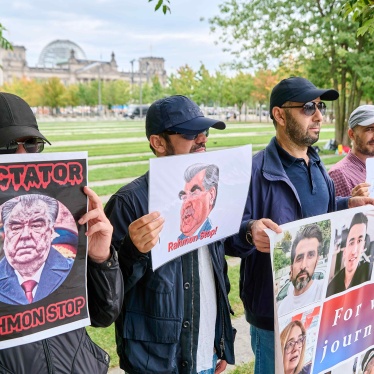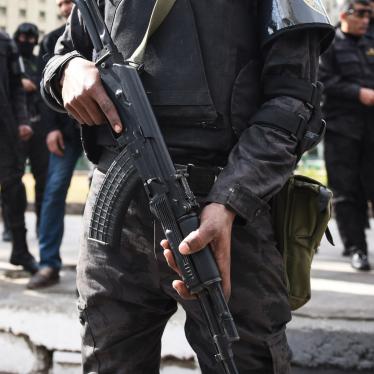Russia’s foreign minister Sergei Lavrov correctly pointed out in a recent article that human rights problems are one of the “main causes of the ‘Arab revolutions.’” As an investigator for Human Rights Watch who has interviewed hundreds of people in Syria who have suffered human rights abuse, I would heartily agree.
Our recent report, “Torture Archipelago,” documents in excruciating detail the use of torture in government detention facilities, including how, where, when, and by whom this torture was carried out. In more than a decade of human rights reporting, I have rarely seen such torture being used on such a scale. The use of torture in Syria is so widespread and systematic that they indicate a clear state policy, meaning they constitute crimes against humanity.
Armed opposition groups operating in certain towns have committed abuses as well. We have published information about torture, kidnappings, and even executions by rebel forces and we have called on both the political and military opposition leadership to condemn and take steps to end these abuses.
These abuses, both by government and opposition forces, are fanning the flames of the conflict. I have interviewed members of the Free Syrian Army who told me that they decided to join the armed opposition only after they had suffered through, or been forced to inflict, cruel torture in Syria’s detention facilities. On its side, the government is using incidents of opposition abuse to vilify the entire opposition movement, Syria seems to be plunging towards full-out civil war, and the situation is becoming more and more complex. Nothing, however, can justify a systematic and nationwide torture network that has been at the heart of the Syrian repression since anti-government demonstrations broke out in Syria in March 2011.
Over the last 16 months Syrian security forces have detained and cruelly tortured thousands of people. Nobody knows how many. And every single former detainee we interviewed told us horrific stories about how guards and interrogators tortured them and others while in detention using, among other torture methods, prolonged beatings, suspension from the ceiling for hours and sometimes days, and electrocution. Several of them showed me scars that were still visible weeks and months after they had been released.
Thirty-one-year old Khalil, for example, told me what had happened to him in one of these detention facilities when I met him in a refugee camp in Turkey:
“They forced me to undress. Then they started squeezing my fingers with pliers… They used two wires hooked up to a car battery to give me electric shocks. They used electric stun-guns on my genitals twice. I thought I would never see my family again.”
Khalil is only one of 60 former detainees I have interviewed in the last year. My colleagues have interviewed just as many. And it was not only adult men who were treated this way. We have documented similar torture against women and elderly, and even children. A 13-year-old from a town in the Homs governorate, for example, told us how security forces detained and tortured him by pulling out one of his toenails.
We don’t publish this information without corroboration. The interviews that we have conducted are long and detailed. We ask not only about the torture, but also about the layout of buildings, the location of the interrogation rooms and torture chambers, the names of guards and fellow inmates. We document scars and study photographs. We ask the former detainees to point out on satellite imagery the exact building where they were detained and tortured. And we ask the same questions from defectors from the army and intelligence facilities who visited or worked in these facilities.
What we found is that the Syrian authorities are running a network of underground detentions facilities. We have identified the locations, names of commanders, and torture methods of many of these. While the actual number of these detention facilities is likely higher, the 27 detention facilities listed in our report are those for which multiple witnesses have indicated the same building and described in detail the torture methods being used there.
The use of torture in Syria is so widespread and systematic that they indicate a clear state policy, Indeed, they constitute crimes against humanity.
Syria seems locked in a downward spiral of more and more violence, and an ever deeper human rights crisis. The best way to stop this vicious cycle is for the international community to send a strong signal to all sides in this conflict that perpetrators will have to pay for their crimes. The United Nations Security Council should therefore – with Russia’s support –refer Syria to the International Criminal Court, which has the power to investigate war crimes and crimes against humanity, whether committed by the government or the opposition.
Russia insists loudly that it is neutral with regards to the Syrian conflict (a controversial claim, for sure, since Russia continues to provide weapons to the government). But since the ICC will investigate all sides, both the government and the opposition, Russia can safely support an ICC referral and maintain its professed neutrality. This is the best, and most peaceful, way to send a signal to all sides of the Syrian conflict that violence and human rights abuse must stop.








